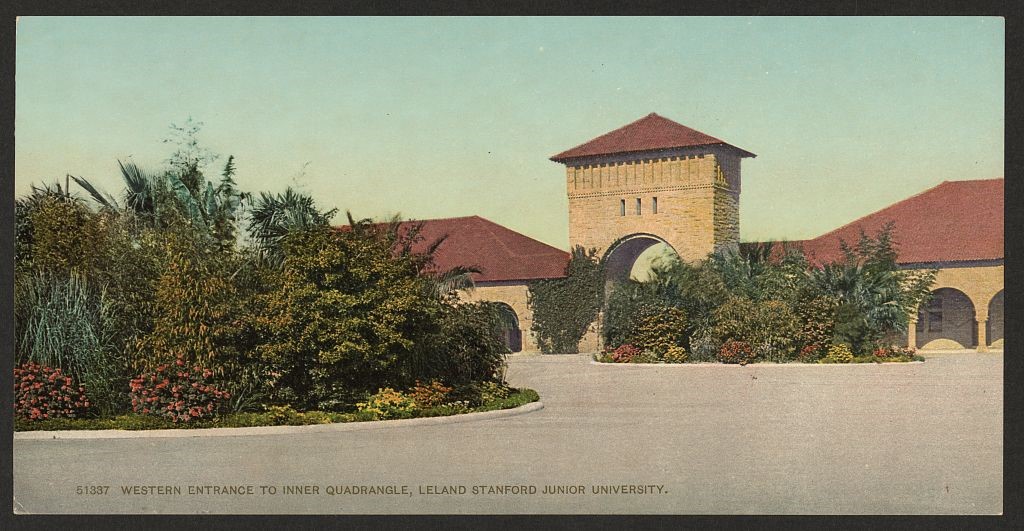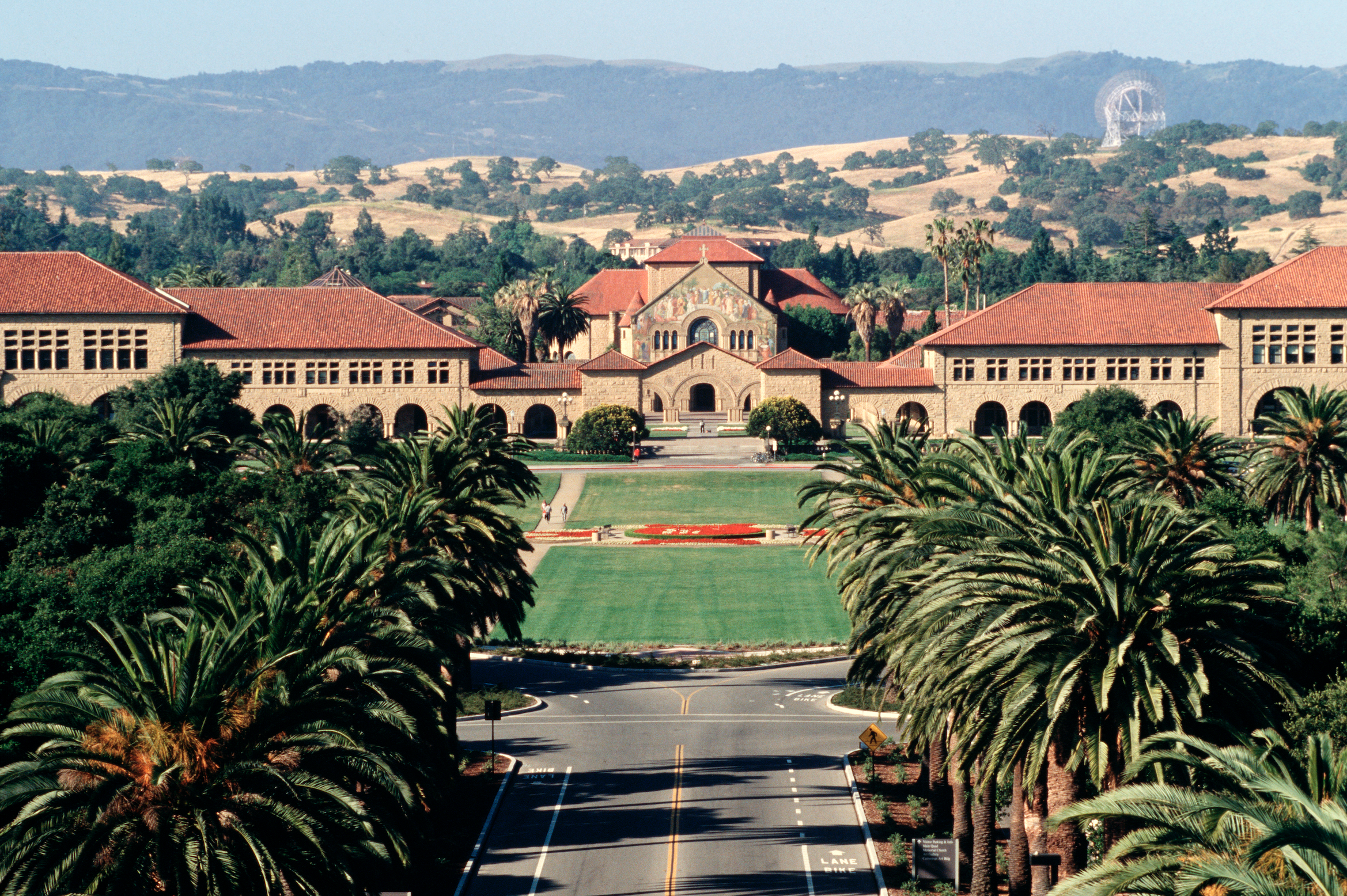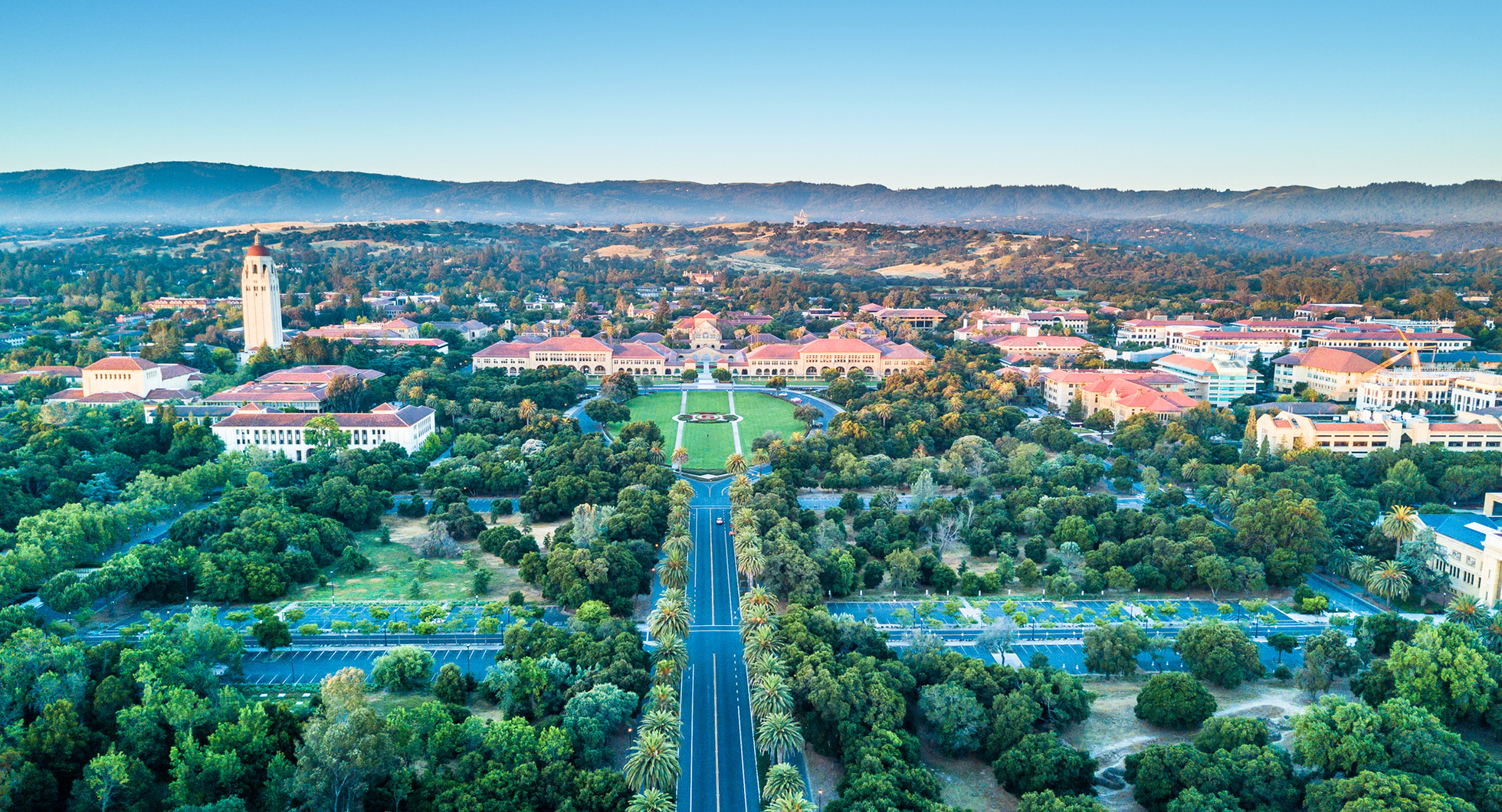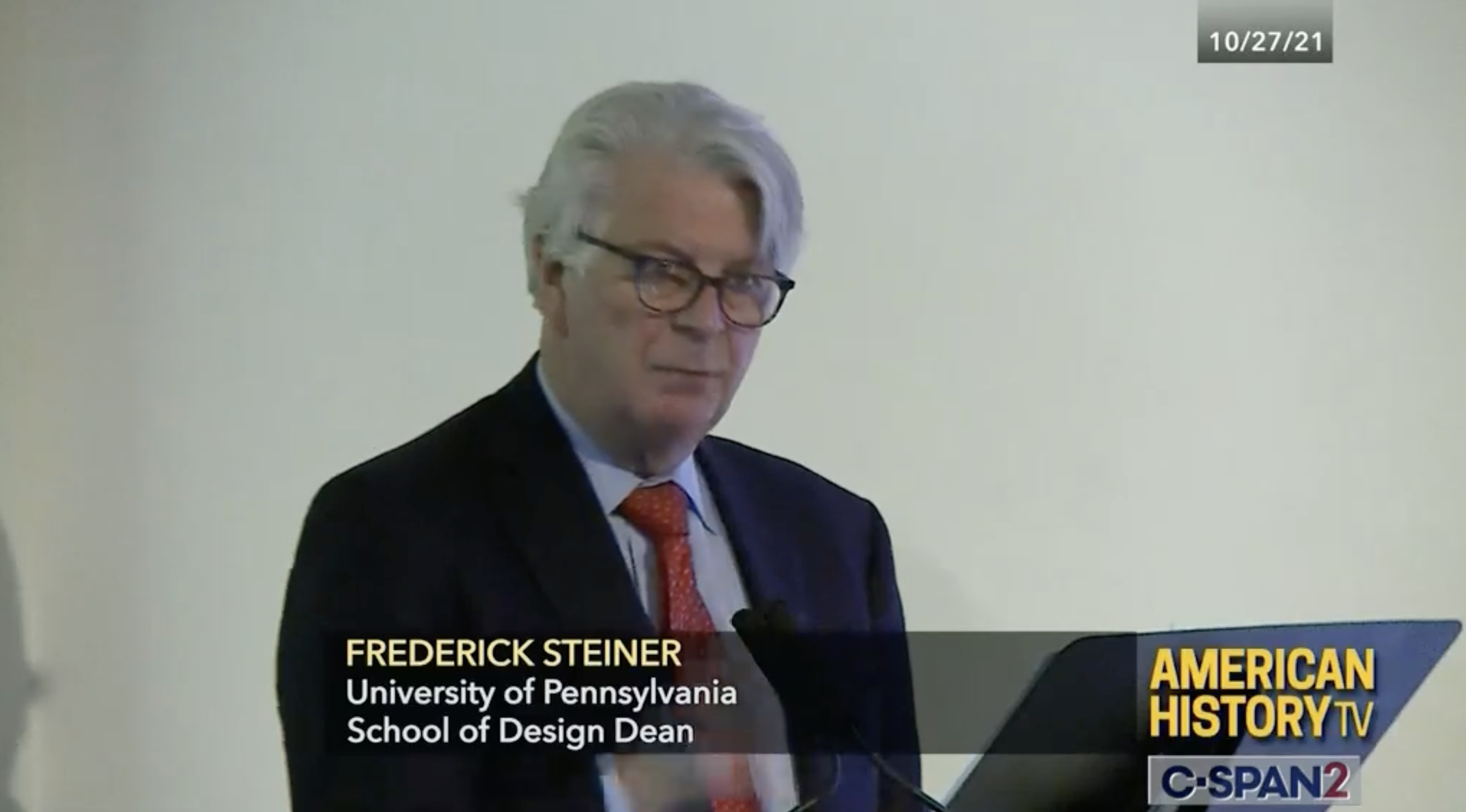
Stanford University, founded in Palo Alto, California, in 1885, tells a unique story in American landscape history regarding educational institutions. The Stanford University campus is an exemplary example of Frederick Law Olmsted’s landscape design with plantings, boulevards, paths, and quadrangles. This, combined with the utilization of sympathetic and uniform architectural styles for buildings, help to bring the university campus into one cohesive unit. A preeminent campus landscape design, the grounds of Stanford provide iconic and unique sightlines both in the past and present. The catalyst for the university also relies on a key figure in United States history with Leland Stanford’s contributions as a rail tycoon, philanthropist, Governor, and Senator. The original Stanford University campus site was a part of the Palo Alto estate that was 6,000 acres. Five hundred of these acres is where Leland Stanford’s arboretum was located and chosen to house the college. The site was located roughly thirty miles from San Francisco, and in 1888 the construction of campus buildings commenced.
Both influential 19th-century figures had their own preferences for the ideal campus design and layout, but it turned out to be a combination of approaches and philosophy in creating the campus. Much of the original Stanford University campus that Frederick Law Olmsted and Leland Stanford collaborated on as well as fought over is well preserved and remains. The distinctive quadrangles and arcades with handsome landscape elements that were originally envisioned live on to the modern day. The established landscape design elements were intentionally set within compatible and sympathetic architecture. The Olmsted-designed entrances, boulevards, and paths created a picturesque setting that was complemented by plantings while also being connected to the university buildings. What has changed is the natural context in which the university sits. While originally developed over rural agricultural landscape aesthetic, Palo Alto has become a booming and much developed suburb of the San Francisco Bay Area. What should be noted is that while these important designs and thoughts were formalized over a century ago, Stanford University has tried to embrace and refer to the past with future expansion. Stanford University has certainly grown significantly in both population and campus size, but what is not lost is the effect that Olmsted has had on the future development of the campus in the modern context. The university “has sought to honor the architectural foundation” of Olmsted’s plans through new quads based on the same design elements from its humble beginnings with quadrangles, sightlines, and axis.
Duncan Snow Trau
Master of Science in Historic Preservation Student
Department of Architecture
R. Wayne Estopinal College of Architecture and Planning
Ball State University, Muncie, IN, USA
Email: duncan.trau@bsu.edu
Dorna Eshrati, Ph.D.
Assistant Professor
Department of Landscape Architecture
R.Wayne Estopinal College of Architecture and Planning
Ball State University, Muncie, IN, USA
Email: deshrati@bsu.edu











